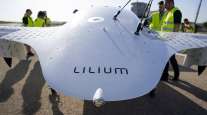Bloomberg News
Drones That Do the Work of 500 Farmers Transform Palm Oil

[Stay on top of transportation news: Get TTNews in your inbox.]
As haze blanketed large tracts of Southeast Asia last month, office workers with Genting Plantations Bhd. in Jakarta were investigating the source of the choking smoke more than a thousand kilometers away.
Images collected from drones flying up to 400 meters (about 1,300 feet) above Genting’s oil palms help the company spot fires in remote and inaccessible areas. It’s part of a technology drive catapulting palm oil, the world’s most-consumed vegetable oil, from dependence on manual labor to becoming one of the fastest-growing markets for commercial unmanned aircraft.
“We monitor satellite images twice a day, and if there are any hot spots near our boundaries, we’ll alert the plantation to take action,” said Narayanan Ramanathan, Genting’s senior vice president of plantation advisory. “If it’s too far away and we can’t access it by road, we’ll send a drone to check.”
With oil-palm plantations spread across some 22.3 million hectares (86,100 square miles) of Malaysia and Indonesia — an area almost the size of the U.K., the industry represents fertile ground for drone sales.
Agricultural industries accounted for more than a quarter of the $2.67 billion in commercial drone sales in 2016, according to Allied Market Research. Demand will expand about 22% a year, reaching $2.44 billion by 2022, it says.
‘Huge Potential’
“In the coming years, use of commercial drones in palm oil plantations is poised to show huge potential,” Yash Doshi, who tracks the aerospace and defense sector for Allied Market Research in Pune, India, said in an email.
That’s partly due to growing awareness about sustainable farming and precision agriculture, as well as government programs, greater use of smartphones, and new “smart” technologies.
Worldwide drone sales to agricultural businesses could top $8 billion by 2026, according to Selbyville, Del.-based Market Study Report LLC.
Besides spotting fires, drones are capable of collecting data that can be used to decide if crops have enough water and nutrients, and even to find leakages in irrigation systems. That makes them an efficiency-boosting boon for the palm oil industry.
A single drone can capture images of about 2,500 hectares of oil palms a day, while a human can cover only 5 hectares, said William Tao, chief operating officer at Hong Kong-based Insight Robotics Ltd., which provides drone-based services as well as remote sensing technologies and AI analytic tools to Southeast Asian palm growers.
Snakes, Scorpions
Workers had traditionally trudged in the tropical heat through dense grass and sometimes hilly terrain inhabited by snakes and scorpions to monitor plantations by sight. The vast size of plantations and the potential for human error can result in unreliable data.
Even where the data are collected using drones, many plantation owners are analyzing the images using artificial intelligence-based systems, Tao said. The use of such tools means images spanning 10,000 hectares can be reviewed by a computer in four hours instead of the 14 days or more that it would take 20 people ordinarily, he said.
The technology is especially helpful in assessing the environmental impact of palm oil and their association with rainforest destruction implicated in the choking haze that routinely afflicts the region.

An aerial photo of Genting's plantation in Johor. (Joshua Paul/Bloomberg News)
“This is a hot topic now,” Genting’s Narayanan said. Malaysia’s fourth-largest listed plantation owner by market value owns about 20 drones and uses the services of other providers to monitor and map about 160,000 hectares of oil palms in Indonesia and Malaysia.
The aerial devices use high-resolution cameras that snap thousands of pictures for assembling composite pictures, which are then used to count trees and map estates. Genting is also weighing multispectral cameras to monitor palm health and detect pests. Smaller, more nimble drones are used for surveillance, especially of flood and fire in hard-to-reach areas.
Genting also uses satellites for mapping and surveillance and is looking to artificial intelligence to analyze those images for more accurate feedback on tree health, yield potential and nutrient status, Narayanan said.
‘Next Big Thing’
Agriculture has been an important market for the past couple of years, according to Aerodyne Group, the world’s third-largest drone-services provider. The Kuala Lumpur-based company gets most of its revenue from construction, but expects the proportion of sales to plantation owners to increase beyond the current 10%, Chief Executive Officer Kamarul Azman said in an interview.
“Agriculture is the next big thing for us,” Kamarul said. “We do know that the market is increasing. We’re focusing more on it.”
The increasing demand for unmanned aerial vehicles may reflect the need to improve efficiency in the wake of lower crude palm oil prices, he said.
“Plantation companies are very traditional,” Kamarul said, adding that they have a tendency to be “a little bit slow” in adopting new technology. “Everyone is clamoring to save costs and increase their efficiency.”
Genting is exploring the use of remote sensors, robotic equipment and autonomous vehicles to direct precise amounts of fertilizer to specific sites. That will avoid less efficient blanket applications, Narayanan said.
There’s “vast potential” for the industry to take up new technology, especially to help with harvesting and field maintenance, as labor and land become increasingly scarce, he said.
Want more news? Listen to today's daily briefing:




